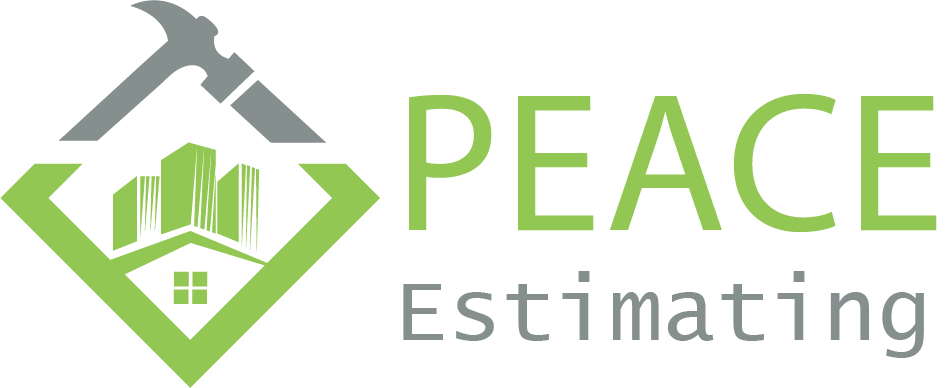- September 28, 2023
- Posted by: admin
- Category: Estimating

Risks of Construction Estimates
The most crucial and difficult steps in a building contractor’s process are those related to estimates. A business may suffer from an erroneous cost estimate, and even small mistakes can be expensive. Such errors frequently cause unpleasant cost overruns and the stalling of your projects.
Most significantly, poor construction estimation will probably result in a dissatisfied client, which could eventually harm your reputation. Cost estimates can be intimidating for lone proprietors or small construction companies.
A study found that 40% of surveyed construction companies lacked confidence in their estimations, which led to lower profitability.
Furthermore, one in four respondents claimed that just two or three erroneous projections may ruin their company. Early on, it’s important to learn how to estimate construction projects.
Here are some of the most typical cost-estimating problems that put organizations at risk and what you can do to avoid them to help you plan more efficiently.
Overheads Being Understated:
This is a common task for average to middlemost construction organizations. Operational expenses are not limited to major construction enterprises.
They should always be accounted for in your cost estimate since they apply to both small and large businesses. If you don’t take into account overhead expenditures, your profit margins will suffer.
It is suggested that you work with a specialized accountant in this area. They can give you an exact assessment of your average overhead costs. Your overhead expenses should be modified to reflect the expansion of your business.
Underestimating the Cost of Labor:
Although labor costs are typically listed as the highest project expense, they may also be the most challenging to estimate. 35% of respondents to the QuickBooks research poll claimed they used educated estimates rather than verified data points to estimate labor costs.
So why is it so difficult? Well, when it comes to the skill sets and talents of employees, it could be challenging to predict who can achieve what and within how long of a time frame.
The next item to consider is whether or not and how much you will require subcontractors. Include any potential overtime and travel costs as well.
Absence from the Site
You’d be surprised at how frequently this problem arises, although it might seem clear. This typically results from one of the following factors:
- It is believed that the location is too far away.
- The group may have taken a quick look at the area once or twice.
- The estimator needs to submit the bid quickly.
- An experienced estimator makes the overconfident assumption that they can foresee what will be needed for the project based on estimates from other projects.

Construction Risk Management
As a result, either bad time management or cutting corners are to blame.
Site visits are crucial and shouldn’t be disregarded or postponed until the very last minute.
As an estimator, it’s essential to visit the actual site so that you can grasp the specifics of the locale and the surrounding infrastructure, enabling you to make well-informed decisions.
Stand your ground and always insist on a site visit if your client or stakeholder is pushing for a speedy turnaround. In the long run, it will more than pay for itself.
Failure to Identify Risks and Prepare Backup Plans:
Regardless of the project’s size, a risk analysis should always be conducted. Again, smaller construction companies frequently overlook this region to save money or time.
Performing risk assessments is justified for the reasons listed below:
- A detailed risk analysis can assist you in determining the project’s value (and financially feasible).
- It will make clear which unknown events must be considered to avoid expense overruns.
The evaluation needs to be more thorough if there is a larger threat.
Making Informed Predictions
In the era of historical databases, cost estimation tools, and the large quantity of information that is easily accessible online, it is ludicrous to think that certain industry professionals still rely on educated assumptions.
You should never develop this bad habit, and your business shouldn’t take this unnecessary risk. It is a certain way to make it more likely for your business to have cost overruns.
When a team is under pressure to complete the bidding process quickly, we see it happen when they start using shortcuts.
All costs should, generally, be calculated using the most recent information available.
Not verifying your construction estimate:
The process of creating a cost estimate is laborious and stressful, and the idea of reviewing all the documentation at the end can be punishing. All of us have been there.
Although it may be easy to assume that the information you have compiled is correct based on experience, your estimations should always be checked by either you, a colleague or a third party. Everyone errs occasionally. even the estimators with the most experience.
Small error margins that accumulate over time can result in unpleasant financial burdens that you’ll probably have to pay for out of your pocket. We cannot overstate how crucial this is. Check everything once more.
Making Offers on Complex Projects:
We are conscious of the market’s intense competition, especially in Australia. Being ambitious is great, but bidding on projects outside of your skill set and capacity can be risky.
Remember that you are not needed to apply for each position that is open at your organization. In certain cases, winning projects that your team cannot finish ends up costing more in the long term than doing nothing at all.
It’s critical to remember that projects with a higher level of complexity will undoubtedly require more labor, supplies, and subcontractors, which will lower your profits.
Pro tip:
Use a building collaboration program that will let you and your team swiftly share documents and communicate to make sure nothing is overlooked when you’re producing an estimate. Instead of limiting your bids to those that exactly match your knowledge and skills, we advise adopting a measured strategy.
Even while it may take more time, steadily growing your business will be better for you and your team in the long run and keep you from becoming overworked. The best course of action is to withdraw and safeguard your company if you are in the middle of a bid process and discover that you cannot efficiently handle the scope and needs of the project.
Conclusion:
Cost estimations are a risky and difficult task. Generally speaking, whether or not you make profits depends on how accurate your forecasts are and whether or not they match your project expenses.
We can observe a pattern wherein inefficient time management and cost-cutting are the main contributors to erroneous forecasts. Such behaviors should be avoided by everyone, but they are especially important for small and medium-sized firms because even one major project gone wrong can have significant financial repercussions.
Thankfully, the risk of human error and mathematical errors can be significantly minimized with the aid of developments in digital software.
With so many options available, cost estimation software has likewise become more and more accessible. Software programs like Planswift &On-Screen Takeoff can give estimators the tools they need to speed up, streamline, and improve the accuracy of the bidding process. It benefits your company, your team, and your client in the long run.
If you need estimation services with 100% bid hit ratio. Then peace estimation is here. For more information visit our website or email us.
